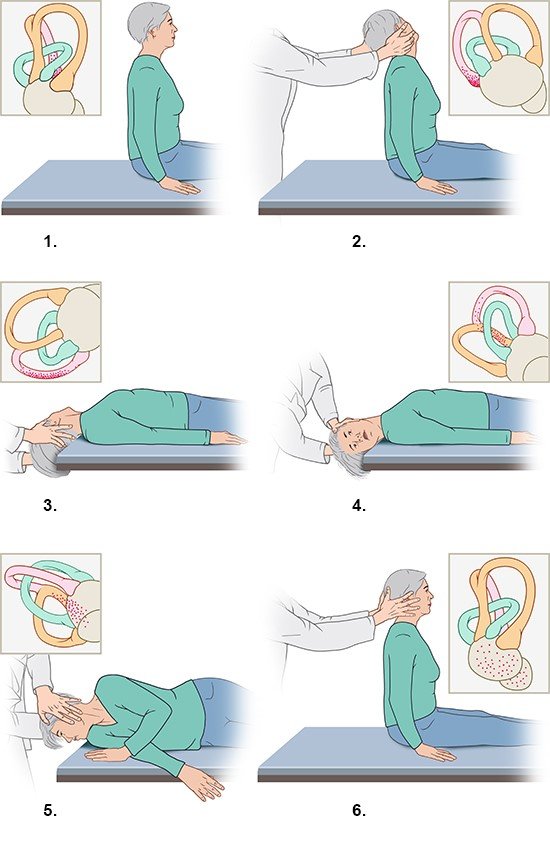Bhattacharyya N, Gubbels SP, Schwartz SR et al. Clinical Practice Guideline: Benign Paroxysmal Positional Vertigo (Update). Otolaryngol Head Neck Surg 2017; 156(3_suppl): S1-S47.
Cromwell C, Tyler J, Nobbs R et al. The Necessity for Post-Maneuver Restrictions in the Treatment of Benign Paroxysmal Positional Vertigo: An Updated Meta-Analysis of the Literature. Otol Neurotol 2018; 39(6): 671-679.
Deutsche Gesellschaft für Allgemeinmedizin und Familienmedizin (DEGAM). Akuter Schwindel in der Hausarztpraxis (S3-Leitlinie, in Überarbeitung). AWMF-Registernr.: 053-018. 2019.
Fu W, Han J, Chang N et al. Immediate efficacy of Gufoni maneuver for horizontal canal benign paroxysmal positional vertigo (HC-BPPV): a meta-analysis. Auris Nasus Larynx 2020; 47(1): 48-54.
Hilton MP, Pinder DK. The Epley (canalith repositioning) manoeuvre for benign paroxysmal positional vertigo. Cochrane Database Syst Rev 2014; (12): CD003162.
Mattle H, Mumenthaler M. Neurologie. Stuttgart: Thieme; 2013.
Sharif S, Khoujah D, Greer A et al. Vestibular suppressants for benign paroxysmal positional vertigo: A systematic review and meta-analysis of randomized controlled trials. 2023.
Zhang X, Qian X, Lu L et al. Effects of Semont maneuver on benign paroxysmal positional vertigo: a meta-analysis. Acta Otolaryngol 2017; 137(1): 63-70.
IQWiG health information is written with the aim of helping people understand the advantages and disadvantages of the main treatment options and health care services.
Because IQWiG is a German institute, some of the information provided here is specific to the German health care system. The suitability of any of the described options in an individual case can be determined by talking to a doctor. informedhealth.org can provide support for talks with doctors and other medical professionals, but cannot replace them. We do not offer individual consultations.
Our information is based on the results of good-quality studies. It is written by a team of health care professionals, scientists and editors, and reviewed by external experts. You can find a detailed description of how our health information is produced and updated in our methods.


